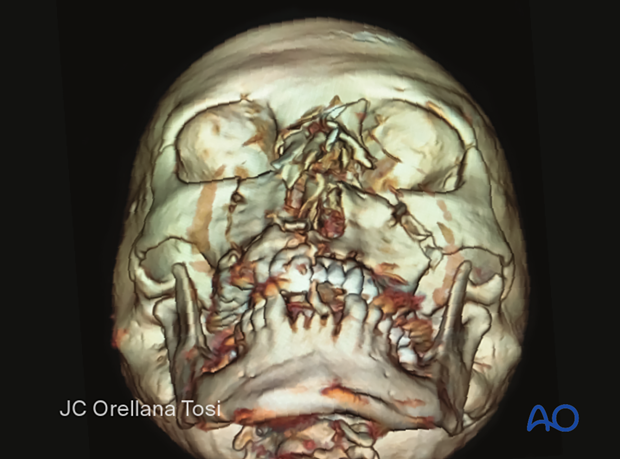NOE Type I fracture
Definition
Single large NOE fragment bearing the medial canthal tendon in unilateral Markowitz type I fractures.
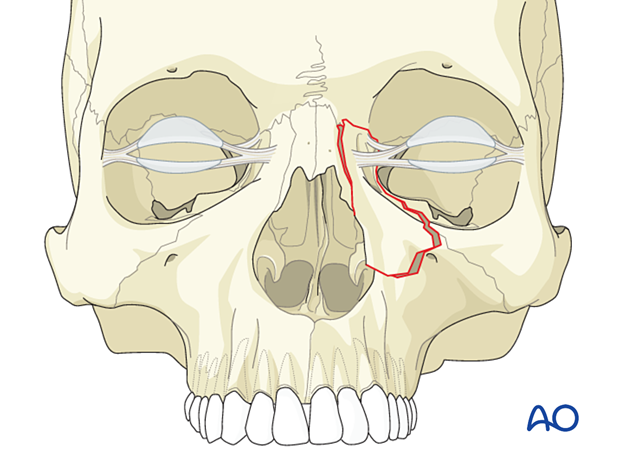
Involvement of the nasal bone
The nasal bone is also frequently involved. In cases of comminution, it may not provide adequate dorsal support to the nasal bridge.
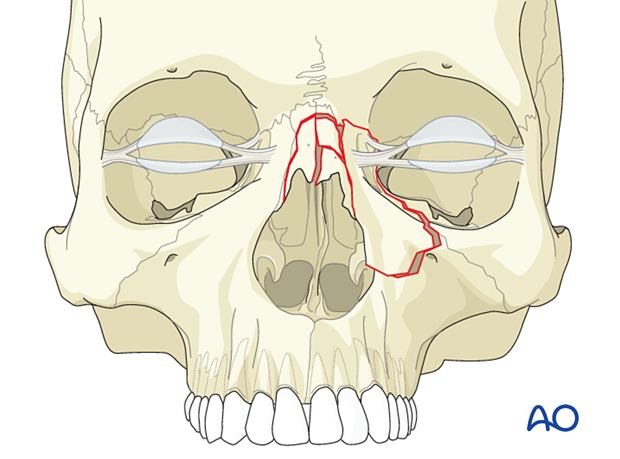
Association with frontal sinus fractures
NOE fractures are often associated with frontal sinus fractures.

General
The nasoorbitoethmoid (NOE) fracture refers to injuries involving the area of confluence of the nose, orbit, ethmoids, the base of the frontal sinus, and the floor of the anterior cranial base. The area includes the insertion of the medial canthal tendon(s). NOE fractures, by definition, are a different entity to isolated nasal bone fractures as they extend medially to the bone bearing the medial canthal ligaments and the ethmoid sinuses. However, they are often associated with fractures of the nasal bones.
NOE fractures are most commonly classified as:
- Type I
- Type II
- Type III
These can be unilateral or bilateral injuries.

Involvement of buttresses
NOE complex fractures involve the upper portion of the medial vertical (nasomaxillary) buttresses of the facial skeleton. Click here for further details on buttresses.
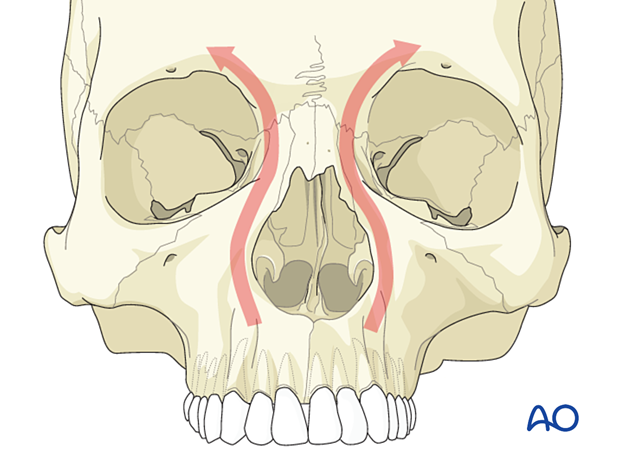
Radiographic findings
This 3D CT scan shows a left unilateral NOE fracture in one complete piece with displacement. Other facial fractures are also visible.
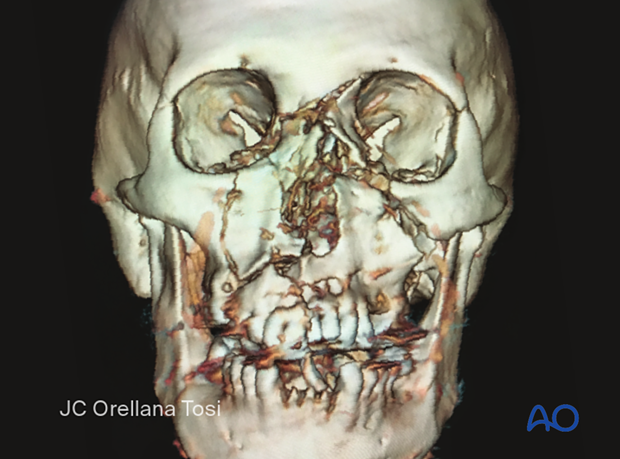
There is some comminution of the nasal bones.
